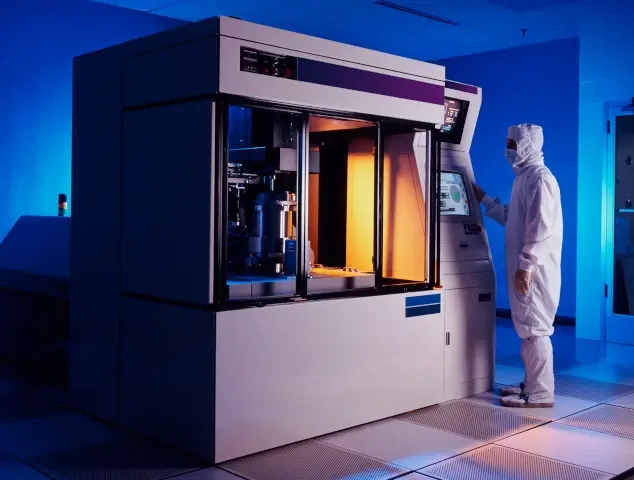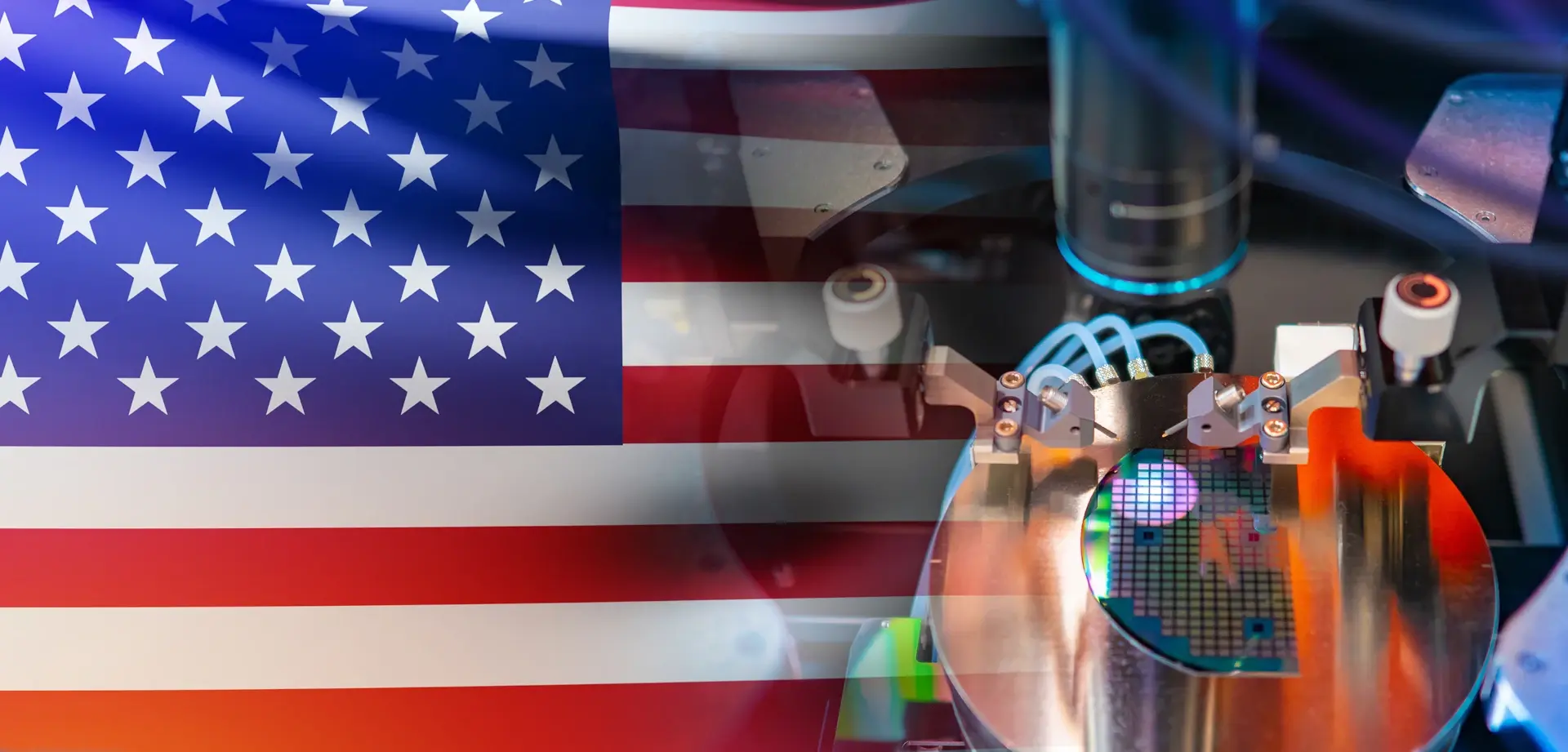How to Build a Chip Factory - Reshoring American Electronics
In New York, electronics industry professionals and investors recently celebrated the grand opening of a new semiconductor manufacturing facility. On the outside, it looks like any other corporate office building, but on the inside, it contains a fleet of robots that will build semiconductor chips with great speed.
A crowd of several hundred people listened to leaders discuss the importance of the new factory for combatting climate change, developing technology, and providing jobs. Ultimately, the factory aims to help prevent supply chain disruptions, like those caused by the Coronavirus pandemic, from happening again.
The global pandemic exacerbated a global shortage of semiconductors, affecting the auto industry, the medical industry, and other industries that rely on electronics. But as a result of the recently passed CHIPS Act, a new generation of domestic chip factories will flourish from New York to Texas.
However, these fab plants may not be ready in time to address the current semiconductor chip shortage. Building semiconductor plants is a long process, and even when they are ready, they will not produce enough chips to meet demand. How can companies prepare for the future?
Checkpoint
Companies are now growing tired of the chaos that comes with overseas semiconductor and electronics production.
Why America’s Semiconductors Left the Country
As of 2021, America’s share of global semiconductor manufacturing was barely 12%, according to the Semiconductor Industry Association. In 1990, it was 37%.
When transistors were invented in the United States, they would go on to become the basis for all future semiconductor chips. The computer chip is essentially a device packed with transistors. Silicon Valley-and much of America’s electronics culture-grew from the work of designing silicon semiconductor chips. Semiconductor technology was born here, in America.
In recent decades, however, the United States government hasn’t invested as much money in its domestic semiconductor chip industry. In contrast, South Korea, Taiwan, and Japan invested significant amounts of money to bolster semiconductor production there.
Government subsidies combined with lower labor costs led American companies to manufacture semiconductor chips overseas for much cheaper, decreasing domestic demand.
In this self-feeding cycle, America’s original chip manufacturing industry began to decline. However, companies are now growing tired of the chaos that comes with overseas semiconductor and electronics production. Political instability and unexpected weather events can disrupt the supply chain, making it difficult for companies to get the chips they need.
In addition, inconsistent production or deliveries can cause significant problems in any industry, including the auto industry and healthcare. This has been evident to American consumers on many fronts in recent years.
While automakers wait for chips, new cars have become scarce and more expensive.
Several companies, including Apple, have limited releases of products like the iPhone 14, with shipping delays common.
More concerning, some patients were forced to use mechanical ventilation early in the pandemic as a result of a lack of ventilators, leading to higher mortality rates. Because parts like semiconductors were hard to find, medical supply companies were unable to build ventilators quickly enough.
Building a Chip Factory Is Delicate and Intricate
Building a chip factory is a significant challenge. A speck of dust on a wafer that becomes a semiconductor can ruin the entire batch, which is why all wafers are made in cleanrooms. With powerful air filtration systems, these rooms are highly monitored manufacturing locations within the larger plant.

Robots move wafers between manufacturing steps while technicians supervise, with close collaboration between the human and machine workforces. Gradually, layers of metal are added to silicon carbide before chips are created in a separate facility.
While the process is automated, every person who enters the clean room has to wear a face shield, a full-body suit, and a pair of boots to prevent contamination.
Domestic chip-making factories require a lot of electricity, and they need to be near a large body of water to cool their equipment. It is also important for them to avoid airports or geological fault lines so that vibrations don’t disrupt the machinery. This limits potential locations.
The supply chain for semiconductors is also quite delicate. For materials and processes to be sourced, semiconductors may require as many as 70 border crossings. Even the war in Ukraine has had a significant effect on the semiconductor supply because it provides almost half of the world’s specialized neon gas used to power laser-based lithography tools.
Although new American fabs have been approved, it will be years, if not decades, before their impact can be felt. They will still need international cooperation to manage the complicated supply chain for creating chips once built.
The CHIPS Act Has Passed

Creating new chip factories in America will create well-paying jobs, but the factories must be subsidized. The CHIPS Act, valued at $52 billion, has now been passed, and the money will go toward building new semiconductor factories.
This package supports an industry that was once a pillar of the American economy and helps to revitalize it. While the amount may appear large, other countries have earmarked even larger amounts to keep their electronics industries competitive. China, for example, invested $150 billion in its semiconductor industry several years ago and is likely to invest more money in the future.
This new legislation will also have to overcome some obstacles. The current labor shortage in the United States indicates that there may not be enough workers available for factory jobs. Fabs that manufacture semiconductors require a large number of specialized workers, and the United States may not have enough of them.
In addition, new domestic factories will produce high-tech chips, but many companies are still using old semiconductors, and are not ready to revamp their products to take advantage of the new technology.
Want to learn about the Supporting American PCB Act, which provides incentives and funding for domestic PCB manufacturing and research? Read our overview.
Some companies will not be able to take advantage of new domestic supplies as a result. Companies looking to transition from foreign semiconductors to domestic semiconductors should consider what domestic options will be available, when they will come on the market, and how to redesign their products to take advantage.
Related Topics
Macro Trends Reshaping the Electronics Manufacturing Landscape
Let’s explore the macro trends shaping the PCBA manufacturing industry’s trajectory and delve into the implications of this transformation.
Companies Bring Electronics Production Home From Asia
Lately, numerous companies have begun reassessing their global value chains and moving electronics production closer to home.
What’s Changing in US Electronics Manufacturing
In the coming years, reshoring electronics manufacturing may be the key to maintaining the US economy's stability.
Build from anywhere, anytime, with MacroFab.
Get an Instant Quote NowAbout MacroFab
MacroFab offers comprehensive manufacturing solutions, from your smallest prototyping orders to your largest production needs. Our factory network locations are strategically located across North America, ensuring that we have the flexibility to provide capacity when and where you need it most.
Experience the future of EMS manufacturing with our state-of-the-art technology platform and cutting-edge digital supply chain solutions. At MacroFab, we ensure that your electronics are produced faster, more efficiently, and with fewer logistic problems than ever before.
Take advantage of AI-enabled sourcing opportunities and employ expert teams who are connected through a user-friendly technology platform. Discover how streamlined electronics manufacturing can benefit your business by contacting us today.